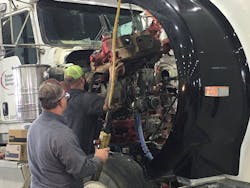In a previous blog, I laid out recommended steps you need to take to prevent accidents from happening. While we’d all prefer never to see a workplace accident, the truth of the matter is even when we have safety procedures in place, accidents do happen.
Swift action following an accident can help mitigate damage as well as preventing similar accidents from happening in the future.
Of course the first thing to do following an accident is to make sure your injured employee gets the best available medical treatment as soon as possible. You always must deal with the most pressing issues first when it comes to accidents and the well-being of your employees and others involved in the accident should be priority Number One.
The next step is to involve your insurance company. Do this as soon as possible because there may be time-related policies and procedures you need to follow. It is important that you familiarize yourself with them so that you don’t do anything that may lead the insurance company to deny paying the claim.
Investigate the accident to determine the root cause. Work closely with any law enforcement or insurance professionals to find out what caused the accident to occur. Once that is done, take some time to look at trends or patterns. If you notice that certain types of accidents seem to be recurring, take the necessary corrective action to prevent a similar accident from happening in the future. This may involve additional training for employees or changing the way certain tasks are performed.
Your responsibility to an injured employee does not end when you help them get the medical treatment they need. Support and maintain regular communication with the injured employee so they feel they are still part of the team and understand that you care about their recovery and want and need them back at work.
Where possible provide and support transitional and/or modified duty to help the employee return to work and get back to full duty as soon as possible.
Conduct regular safety audits of your facility to identify problem areas and then take steps to fix any issues that are identified. Hold periodic safety meetings with your staff during which you reinforce your company’s commitment to safety and go over key safety policies.
If you don’t already have a safety committee, following an accident is a good time to start one. The safety committee should be a cross-functional team that looks at every aspect of your business and helps determine best safety practices. Think about rewarding employees for things like safe driving records or accident-free months in the shop, etc. Safety has to be part of the fabric of the company’s culture, and it starts from the top down.
About the Author
Joseph Evangelist
Joseph Evangelist previously served as EVP for Transervice, president of LLT International Inc., and CEO of Lend Lease Trucks Inc. Evangelist is a seasoned transportation executive with domestic and international experience in sales, operations, mergers, and acquisitions.
